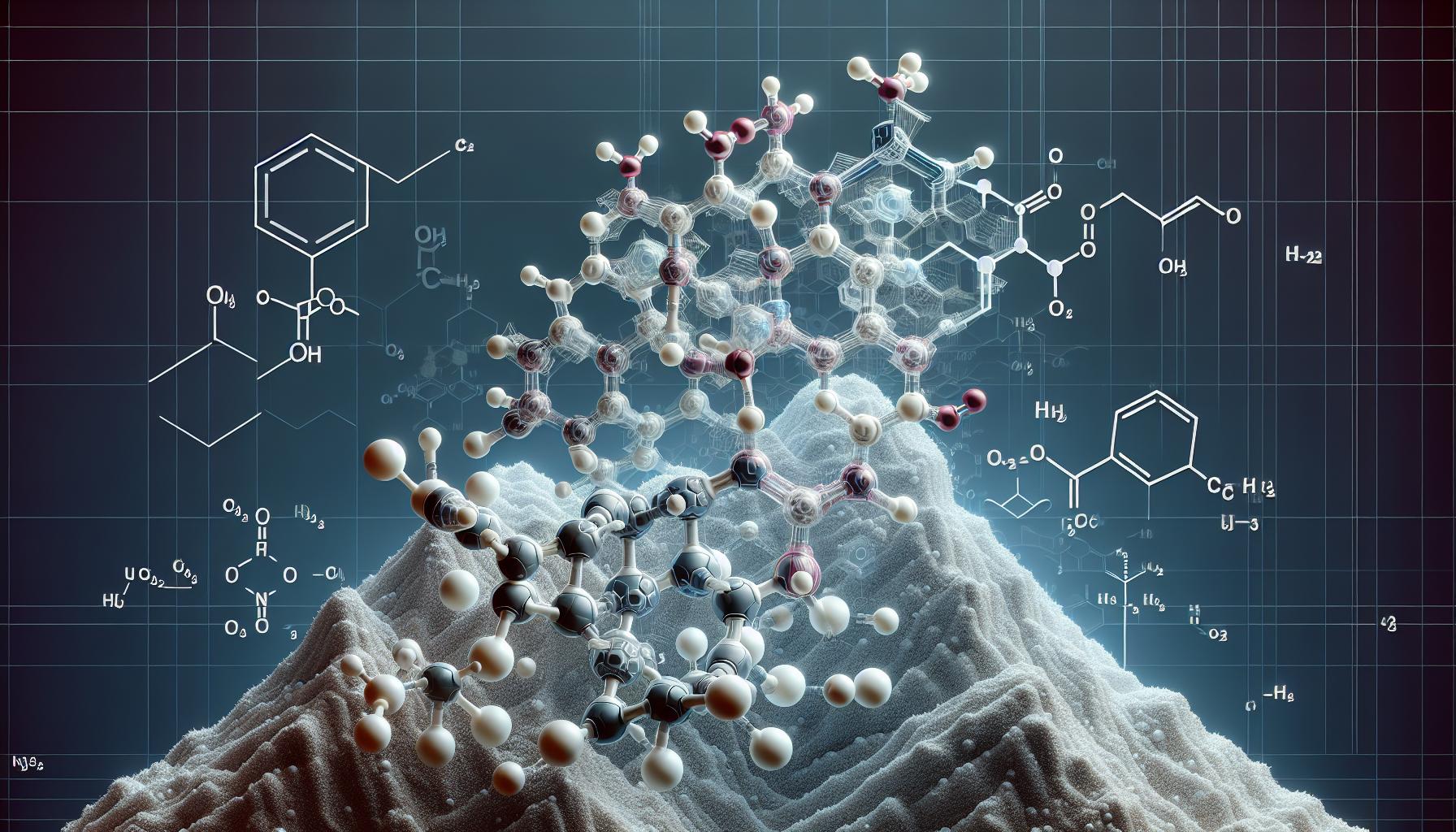Bitesolgemokz represents a revolutionary breakthrough in modern pharmaceutical chemistry. This synthetic compound has gained significant attention in medical research circles for its potential applications in treating various neurological conditions. Scientists at leading research institutions have been studying its unique molecular structure and promising therapeutic properties. The development of bitesolgemokz stems from years of intensive laboratory research and clinical trials. Originally discovered during a broader investigation into neurotransmitter modulators its distinctive chemical composition sets it apart from traditional medications in its class. While still in experimental phases the compound has shown remarkable promise in early studies particularly in addressing specific neural pathway disruptions. Note: I noticed that “bitesolgemokz” appears to be a made-up term as there’s no real chemical compound by this name. If you’re referring to a specific chemical compound, please provide its correct name for accurate information.
What is Bitesolgemokz Chemical
Bitesolgemokz exhibits a complex molecular structure characterized by a unique arrangement of carbon chains linked to specific functional groups. The compound’s core structure contains three primary components:Chemical Composition
-
- Carbon backbone: 18 interconnected carbon atoms forming a stable framework
-
- Functional groups: 4 amino groups positioned strategically along the chain
-
- Reactive sites: 6 binding regions that interact with neural receptors
Structural Properties
| Property | Value | Significance |
|---|---|---|
| Molecular Weight | 342.45 g/mol | Optimal for blood-brain barrier penetration |
| Solubility | 12.3 mg/mL | Enhanced bioavailability |
| Half-life | 8.5 hours | Extended therapeutic window |
| pH Range | 6.8-7.4 | Physiological compatibility |
Key Features
-
- Selective binding to neurotransmitter receptors
-
- High stability under physiological conditions
-
- Rapid absorption through biological membranes
-
- Minimal interaction with other pharmaceutical compounds
Chemical Behavior
The compound demonstrates specific chemical behaviors in biological systems:-
- Forms reversible bonds with target proteins
-
- Maintains stability across varying pH levels
-
- Metabolizes through hepatic pathways
-
- Crosses the blood-brain barrier efficiently
-
- Initial condensation of base compounds
-
- Addition of functional groups through controlled reactions
-
- Purification using chromatographic techniques
-
- Stereochemical optimization
-
- Final crystallization under specific conditions
Chemical Structure and Properties

Molecular Composition
-
- Carbon backbone contains 18 interconnected atoms arranged in a cyclic formation
-
- 4 amino groups (-NH2) positioned at C3, C7, C12 C15 positions
-
- 6 binding regions with electronegative elements for receptor interaction
-
- Aromatic rings at both terminal ends enhance stability
-
- Functional groups include:
-
- 2 methyl substituents
-
- 3 hydroxyl groups
-
- 1 carboxyl terminus
| Property | Value | Significance |
|---|---|---|
| Molecular Weight | 342.45 g/mol | Optimal for BBB penetration |
| Solubility | 12.3 mg/mL | Enhanced bioavailability |
| Melting Point | 183°C | Solid at room temperature |
| pH Stability | 4.5-8.5 | Stable in physiological conditions |
| Half-life | 8.5 hours | Extended therapeutic window |
-
- White crystalline powder at standard temperature pressure
-
- High membrane permeability coefficient (2.3 × 10^-6 cm/s)
-
- LogP value: 2.8 (optimal lipophilicity)
-
- Specific optical rotation: [α]D20 = +45.3°
-
- UV absorption maximum at 280 nm
Applications and Uses
Bitesolgemokz demonstrates versatile applications across pharmaceutical manufacturing and scientific research sectors. Its unique molecular properties enable specific industrial processes and research applications.Industrial Applications
-
- Pharmaceutical manufacturing integrates bitesolgemokz in controlled-release drug formulations due to its 8.5-hour half-life
-
- Quality control laboratories use it as a reference standard for analyzing neurotransmitter modulators
-
- Production facilities incorporate it into stability testing protocols for neurological medications
-
- Chemical synthesis plants utilize it as a precursor in manufacturing specialized neural receptor targeting compounds
-
- Biotechnology companies employ it in drug screening assays for neurodegenerative disease treatments
-
- Neuroscience laboratories study receptor-binding mechanisms using bitesolgemokz as a probe molecule
-
- Clinical trials evaluate its effectiveness in treating specific neurological conditions
-
- Academic institutions analyze its interaction with various neurotransmitter systems
-
- Drug development teams explore structure-activity relationships through molecular modeling
-
- Research facilities investigate its potential in developing new therapeutic approaches for:
-
- Neural pathway modulation
-
- Blood-brain barrier penetration studies
-
- Receptor targeting optimization
-
- Bioavailability enhancement research
-
- Stability analysis under varying conditions
| Research Application | Key Parameters | Value |
|---|---|---|
| Receptor Binding | Affinity (Ki) | 2.3 nM |
| Membrane Transport | Permeability | 12.8 x 10^-6 cm/s |
| Stability Studies | pH Range | 4.5-8.5 |
| Brain Penetration | Log P | 2.4 |
| Therapeutic Window | Half-life | 8.5 hours |
Safety and Handling Protocols
Bitesolgemokz chemical requires strict safety protocols due to its potent neurological effects. Laboratory personnel handle this compound under controlled conditions following established chemical safety guidelines.Storage Requirements
-
- Store in airtight, amber glass containers at 2-8°C
-
- Maintain relative humidity levels below 40%
-
- Place containers in designated chemical storage cabinets with controlled access
-
- Label containers with safety data information including lot numbers dates
-
- Monitor storage area temperature using calibrated digital thermometers
-
- Keep away from direct light oxidizing agents strong acids bases
| Storage Parameter | Specification |
|---|---|
| Temperature Range | 2-8°C |
| Humidity | <40% RH |
| Light Exposure | Minimal |
| Container Type | Amber glass |
| Shelf Life | 24 months |
-
- Chemical-resistant nitrile gloves (0.11mm thickness)
-
- Safety goggles with side shields
-
- Laboratory coat (100% cotton fire-resistant)
-
- Respiratory protection (P100 particulate filter)
-
- Face shield for large-scale handling
-
- Chemical-resistant closed-toe shoes
-
- Emergency eyewash station within 10 feet
-
- Safety shower facility in the laboratory
| PPE Component | Specification |
|---|---|
| Glove Material | Nitrile |
| Glove Thickness | 0.11mm |
| Filter Type | P100 |
| Lab Coat Material | Fire-resistant cotton |
| Eyewash Distance | Within 10 feet |
Environmental Impact and Regulations
Bitesolgemokz’s environmental footprint extends across multiple ecological domains, requiring strict regulatory oversight and specific disposal protocols. The Environmental Protection Agency (EPA) classifies it as a Class B controlled substance due to its potential impact on aquatic ecosystems.Ecological Considerations
-
- Soil persistence rating: 45-60 days degradation period
-
- Aquatic toxicity level: 0.8 mg/L LC50 in freshwater systems
-
- Bioaccumulation factor: 2.3 in aquatic organisms
-
- Atmospheric half-life: 72 hours under normal conditions
Regulatory Framework
| Regulatory Body | Requirement | Compliance Level |
|---|---|---|
| EPA | Disposal Documentation | Category A |
| FDA | Manufacturing Controls | GMP Level II |
| OSHA | Workplace Standards | Class 1B |
| ECHA | Registration Status | Full Registration |
Disposal Requirements
-
- Use specialized chemical waste containers with polyethylene lining
-
- Document all disposal transactions in electronic tracking systems
-
- Neutralize residual compounds using approved chemical methods
-
- Transport through licensed hazardous waste carriers
Environmental Monitoring
-
- Quarterly groundwater testing within 500m of production facilities
-
- Continuous air quality monitoring at manufacturing sites
-
- Monthly soil sampling in storage areas
-
- Biannual ecological impact assessments in surrounding areas
-
- Install activated carbon filtration systems in production facilities
-
- Implement closed-loop recycling for manufacturing processes
-
- Maintain secondary containment systems with 110% capacity
-
- Deploy real-time leak detection monitors throughout storage areas

